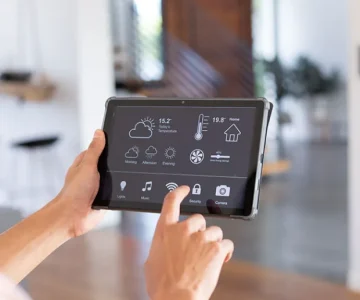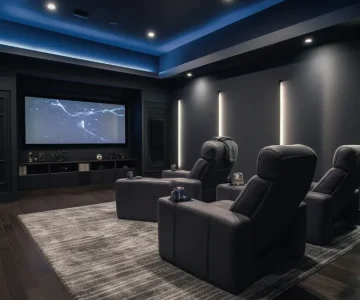Smart home automation has changed the way we interact with our living spaces, offering a blend of comfort, safety, and efficiency. Yet, misconceptions still discourage many homeowners from exploring its true potential. Let’s break down some common myths and uncover the reality behind modern smart home systems.
Understanding Smart Home Automation
At its core, smart home automation connects devices such as lighting, heating, appliances, and security systems to a central control platform. Whether through your smartphone or a voice assistant like Google Assistant, you can manage your home from anywhere with ease.
Myth 1: It’s Complicated to Use
The Truth: Simplicity is built in.
Today’s systems are designed for intuitive use. Mobile apps provide straightforward controls, and voice commands make everyday tasks effortless. Professional installation also ensures all components work together smoothly.
Myth 2: Only Tech Experts Can Use It
The Truth: Anyone can benefit.
Whether you’re tech-savvy or a complete beginner, there’s a solution to fit your needs. Custom setups mean you can automate just the basics or create a fully connected home tailored to your lifestyle.
Myth 3: It’s Too Expensive
The Truth: It’s an investment that saves money.
While setup costs vary, many homeowners see long-term savings through improved energy efficiency. Automated heating, cooling, and lighting systems reduce waste and lower monthly utility bills.
Myth 4: It Reduces Home Security
The Truth: It strengthens protection.
Smart systems often offer advanced security features, including real-time camera monitoring, motion sensors, and encrypted networks that keep your data safe.
Myth 5: It Doesn’t Look Good
The Truth: It blends right in.
From sleek touch panels to devices that work with existing switches, modern smart home technology integrates seamlessly into any décor without compromising style.
Key Benefits of Smart Home Automation
- Unmatched Convenience – Control lights, temperature, and appliances with a single tap or voice command.
- Energy Efficiency – Track and manage energy use to cut costs and reduce your carbon footprint.
- Enhanced Security – Stay informed and protected with automated locks, cameras, and alerts.
- Personal Comfort – Customise room settings, music, and ambience to match your mood.
How It Works
Smart home devices communicate via a central hub connected to your home network. Sensors monitor conditions like temperature or movement, triggering automated responses—such as adjusting lighting at sunset or locking doors when you leave. Most systems also integrate easily with your existing equipment.
Popular Uses
- Entertainment: Sync lighting and audio for movie nights.
- Energy Management: Use smart thermostats to optimise heating and cooling.
- Security: Keep watch with cameras and smart locks.
- Daily Tasks: Schedule appliances and automate lighting for added convenience.
Why It’s Worth Considering
- Future-Ready: Scales and adapts as technology advances.
- Lifestyle Upgrade: Reduces effort in managing your home while enhancing comfort.
- Property Value: Smart-equipped homes often appeal more to buyers.
Getting Started
- Identify the areas of your home that could benefit from automation.
- Seek professional advice for a tailored solution.
- Choose reliable, high-quality devices for the best experience and durability.
Final Thoughts
Smart home automation isn’t just a tech fad—it’s a practical way to create a safer, more efficient, and more enjoyable living environment. By moving past the myths, it’s clear that these systems are accessible, easy to use, and well worth the investment. Whether your goal is saving energy, improving security, or enjoying the ultimate in convenience, smart home technology offers a gateway to a more connected and comfortable future.





